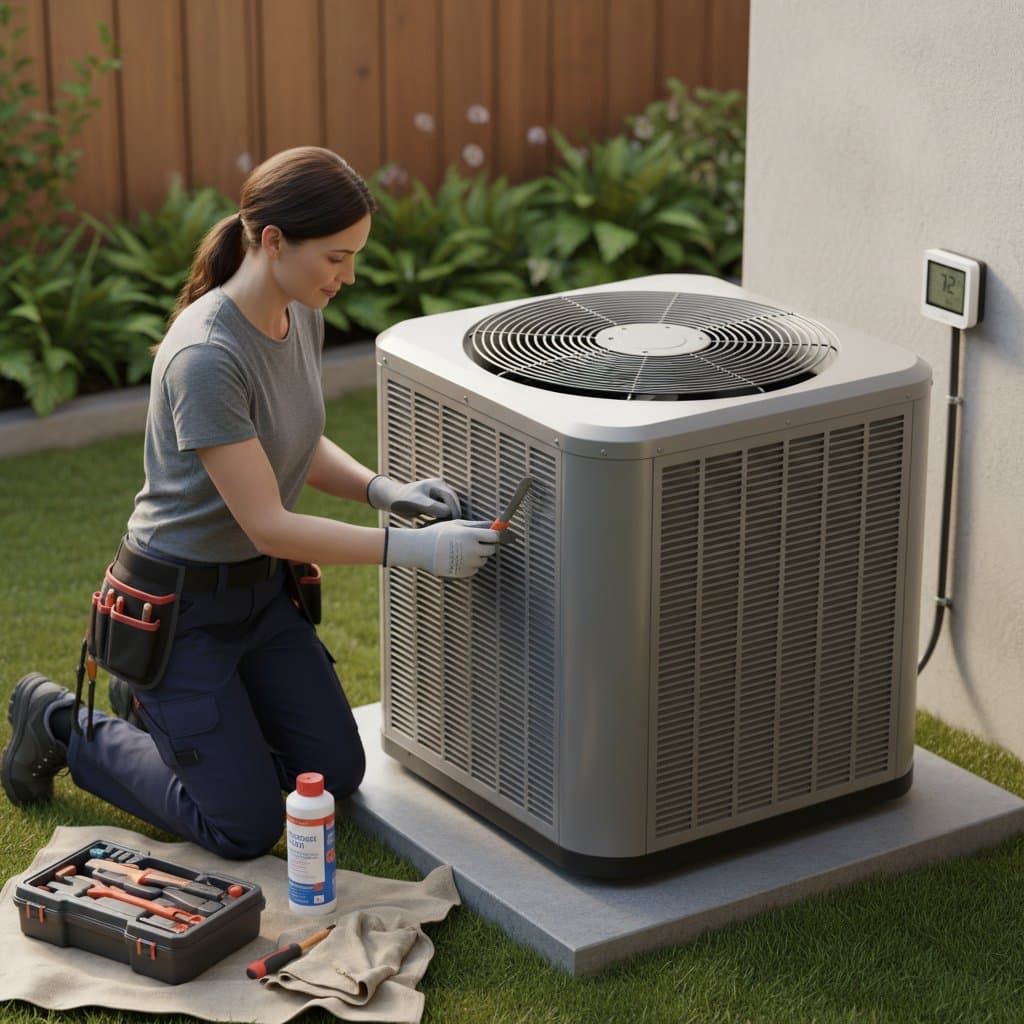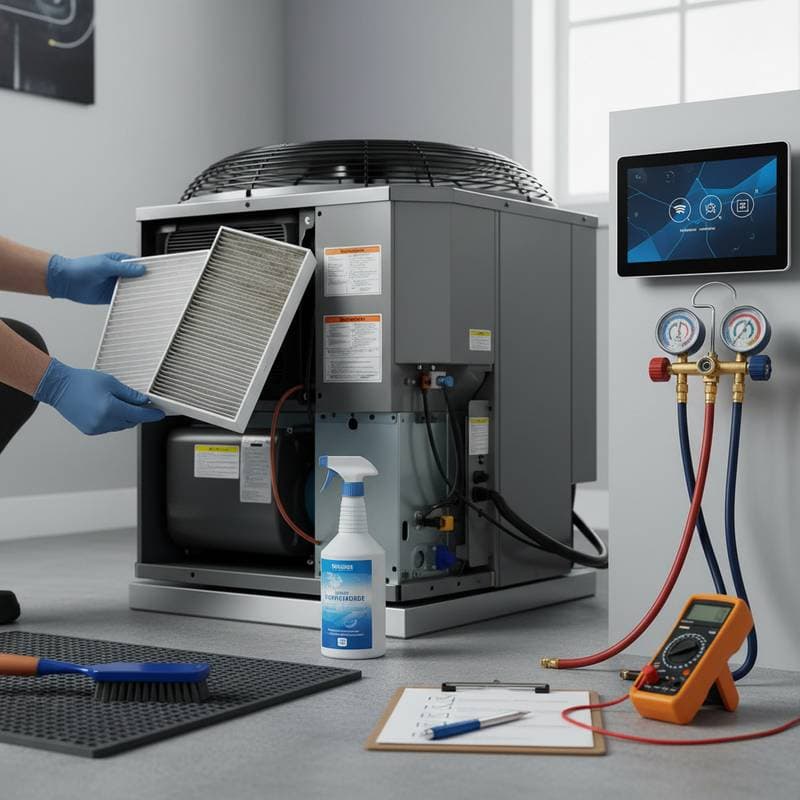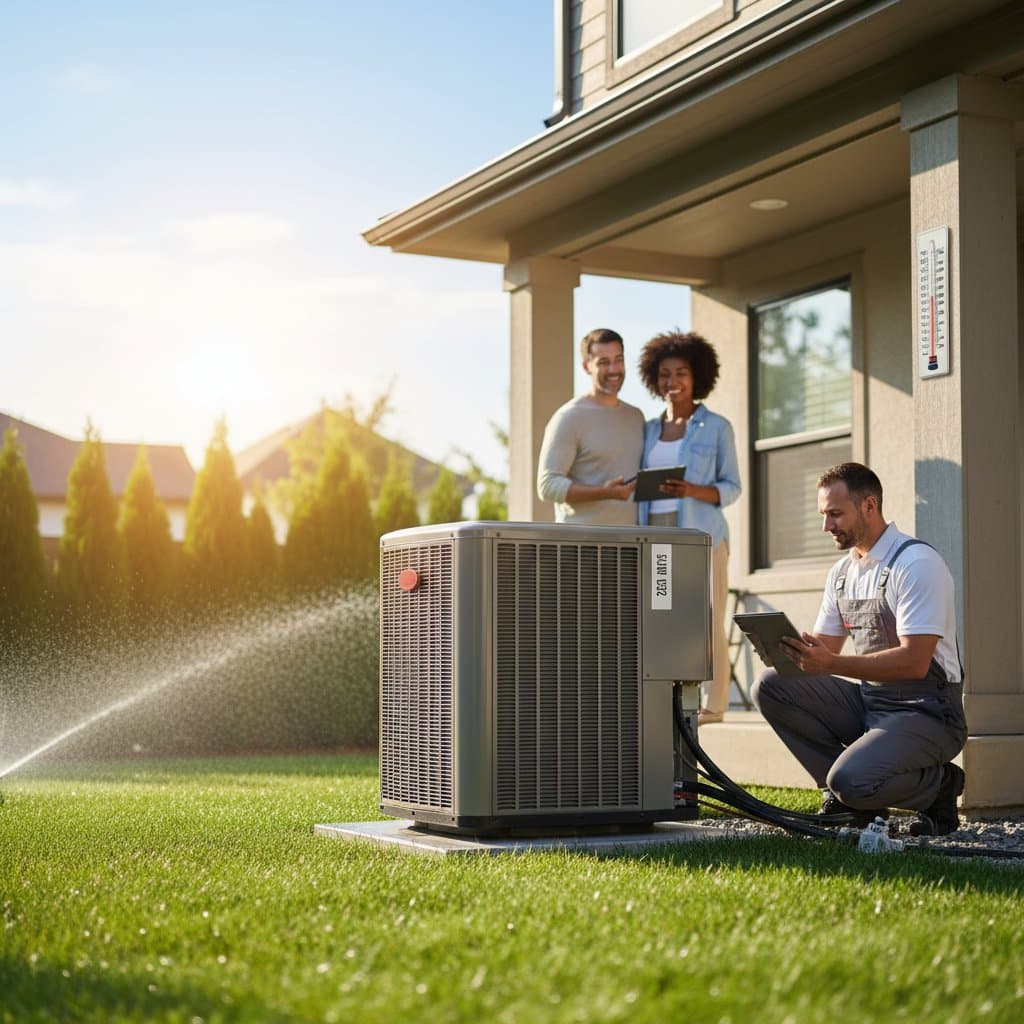Essential AC Tune-Ups to Avoid Summer Disruptions
A reliable air conditioner provides more than convenience; it ensures essential cooling during rising temperatures. Homeowners often delay action until the system fails, yet proactive tune-ups eliminate such issues. Consistent upkeep maintains efficiency, reduces operational costs, and prolongs equipment longevity. Basic procedures demand minimal equipment, just diligence and allocated time.
The Value of Proactive AC Maintenance
Systems under regular attention consume less power and achieve cooling more rapidly. Accumulated dirt, unsecured wiring, and insufficient refrigerant represent primary performance obstacles. Overlooked problems result in elevated utility charges and substantial repair expenses. According to the U.S. Department of Energy, standard maintenance elevates efficiency by as much as 15 percent. Consequently, a properly serviced unit delivers superior cooling while generating monthly savings.
Failure to perform upkeep accelerates unit deterioration. Compressor substitution ranges from 900 to 2,500 dollars, whereas complete system overhaul surpasses 6,000 dollars. In contrast, a tune-up priced below 150 dollars emerges as a prudent financial choice.
Step 1: Replace or Clean the Air Filter
The air filter serves as the initial barrier against airborne particles. Obstruction in the filter impedes circulation, compelling the system to exert extra effort. Manufacturers advise exchanging disposable filters every one to three months, adjusted for occupancy and environmental factors. Residences with animals or high activity levels benefit from monthly changes. For reusable filters, rinse under flowing water, permit full drying, and reposition securely.
A pristine filter elevates air purity indoors and eases blower motor demands. This fundamental action alone lowers energy usage by up to 10 percent.
Step 2: Clean the Outdoor Condenser Unit
The exterior condenser gathers foliage, soil, and clippings that hinder ventilation. Prior to any work, deactivate power via the disconnect switch or circuit breaker. Clear surrounding debris while preserving a two-foot clearance on each side. Employ a hose to rinse fins inward to outward with moderate pressure. High-force streams risk deforming the delicate aluminum structure.
Bent fins warrant correction using a fin comb to reinstate airflow. Examine fan blades for fractures or corrosion, and secure any loosened fasteners. A cleared condenser operates at reduced temperatures, alleviating compressor strain and mitigating frequent failure sources.
Step 3: Examine the Evaporator Coil and Drain Line
Within the indoor unit, the evaporator coil extracts warmth from circulated air. Dust and microbial growth accumulate over time on its surface. Access the panel and apply a soft brush or dedicated cleaner to dislodge residues. Then, inspect the condensate drain, responsible for expelling excess moisture. Blockages provoke leaks and excess indoor humidity.
Clear the pathway by introducing one cup of distilled vinegar into the entry, chased by warm water. This mixture breaks down organic and mineral accumulations. Confirm unobstructed flow toward the collection pan or external outlet.
Step 4: Verify Electrical Connections and Thermostat Functionality
Unsecured electrical links compromise stability and pose risks. With power disabled, scan for damaged insulation or heat marks at junctions. Secure any apparent looseness. Detection of scorched materials necessitates immediate professional intervention before reactivation.
Subsequently, evaluate the thermostat. Install fresh batteries and confirm display precision. Programmable models optimize savings up to 10 percent by modulating settings during absences. Outdated units justify replacement, recouping costs in one cooling period.
Step 5: Lubricate Components and Inspect Refrigerant Lines
Mechanical friction accelerates wear and elevates power draw. Certain blower and fan motors feature lubrication ports requiring non-detergent oil drops. Modern designs incorporate sealed bearings exempt from such needs; consult the owner manual prior to application. Survey refrigerant conduits for abrasion or compromised covering. Damaged sheathing diminishes performance and invites moisture complications.
Indicators for Professional Assistance
Homeowners handle numerous tune-up elements effectively, but select procedures demand expert handling. Refrigerant assessment, circuit evaluation, and pressure adjustment require precise instruments. Persistent operation, inadequate cooling output, or atypical sounds signal the need for inspection. Certified HVAC specialists allocate one to two hours for comprehensive service, encompassing pressure verification, coil sanitation, and operational confirmation.
Practical Strategies for Effective Maintenance
Plan servicing ahead of summer demand to circumvent delays. Trim adjacent vegetation to facilitate unobstructed external airflow. Establish recurring filter change reminders via digital calendars. Monitor auditory shifts, which indicate emerging component fatigue. Document service timelines and observations to support warranty claims.
Preserve System Longevity with Routine Checks
Efficient air conditioners demand reduced energy, deliver prompt cooling, and endure extended periods. Dedicate an afternoon to coil cleansing, part examination, and filter updates. Regular adherence yields diminished emergency calls and enhanced durability.
Seasonal checklists form the cornerstone of uninterrupted operation. Approach your air conditioner like vital household equipment: sustain cleanliness, conduct inspections, and address minor faults promptly to avert major expenditures.





